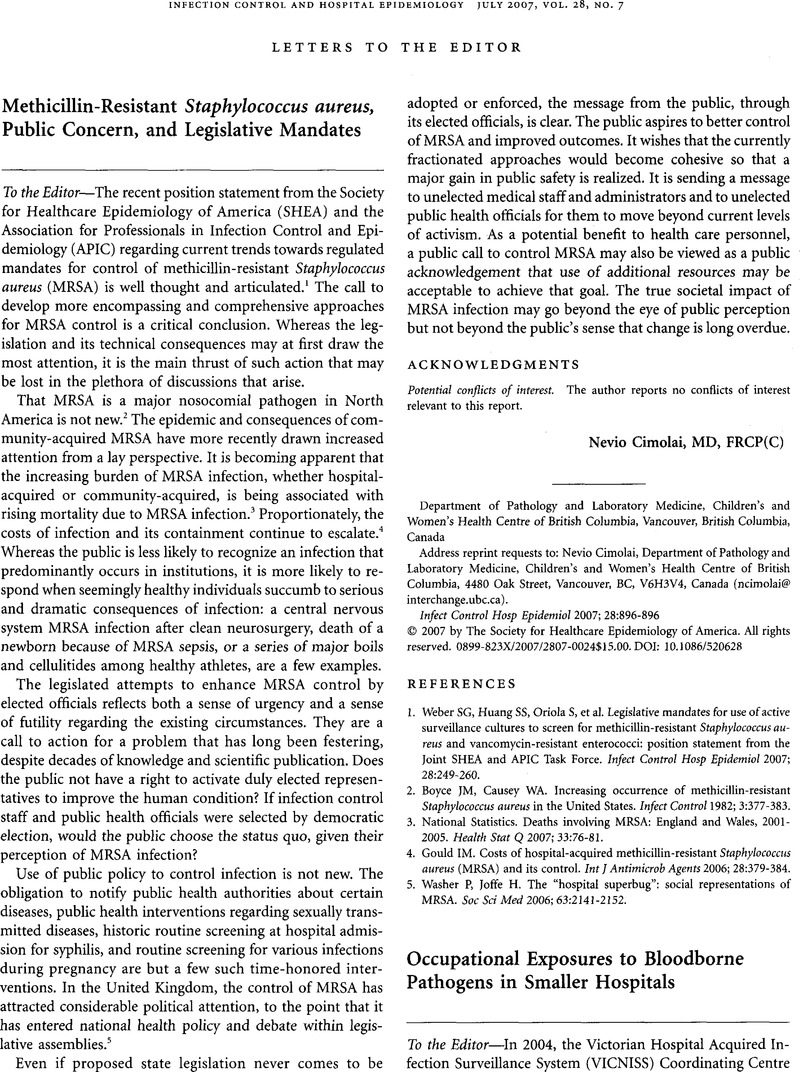Crossref Citations
This article has been cited by the following publications. This list is generated based on data provided by Crossref.
Cimolai, N.
2008.
MRSA and the environment: implications for comprehensive control measures.
European Journal of Clinical Microbiology & Infectious Diseases,
Vol. 27,
Issue. 7,
p.
481.
Cimolai, Nevio
2008.
The role of healthcare personnel in the maintenance and spread of methicillin-resistant Staphylococcus aureus.
Journal of Infection and Public Health,
Vol. 1,
Issue. 2,
p.
78.
Struelens, Marc J
2009.
Guidelines and indicators for methicillin-resistant Staphylococcus aureus control in hospitals: toward international agreement?.
Current Opinion in Infectious Diseases,
Vol. 22,
Issue. 4,
p.
337.
Cimolai, Nevio
2010.
Methicillin-resistantStaphylococcus aureusin Canada: a historical perspective and lessons learned.
Canadian Journal of Microbiology,
Vol. 56,
Issue. 2,
p.
89.
Wise, Matthew E.
Weber, Stephen G.
Schneider, Amy
Stojcevski, Meg
France, Anne Marie
Schaefer, Melissa K.
Lin, Michael Y.
Kallen, Alexander J.
and
Cochran, Ronda L.
2011.
Hospital Staff Perceptions of a Legislative Mandate for Methicillin-Resistant Staphylococcus aureus Screening.
Infection Control & Hospital Epidemiology,
Vol. 32,
Issue. 6,
p.
573.



